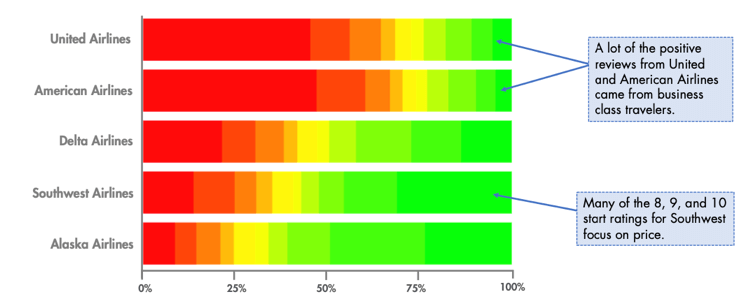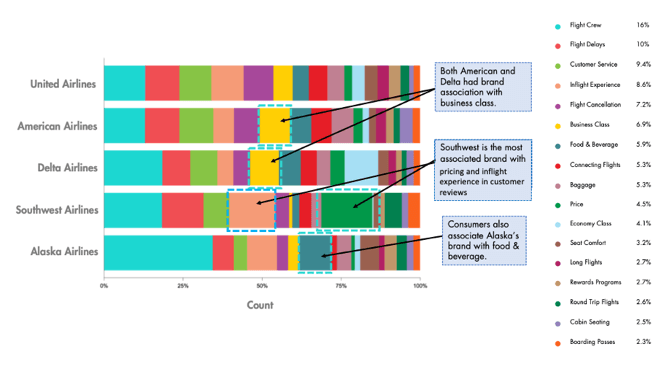As marketers, we talk a lot about making meaningful connections with customers. Two words that get thrown around in those conversations are “personal” and “personalized,” and they’re both important concepts to understand for the development of exceptional customer experiences – read on to learn more about the differences and proper context for use.
How to tell the difference:
When specific data points are used to show you know someone, it’s PERSONALIZED. When the full experience context is taken into consideration and used to show you know someone, it’s PERSONAL.
To help illustrate the difference, let’s take a look at Jake. He’s a member of several Quick Service Restaurant (QSR) loyalty programs. Every year, he receives emails from each QSR on his birthday.
-
- QSR A: The email wishes him happy birthday by name and includes a free ice cream sundae offer. This is an example of a personalized communication because it references Andy by name and is sent specifically to him on his birthday.
- QSR B: The email acknowledges this is a birthday milestone (without being specific – i.e., Happy 40th Birthday). The offer gives Jake the choice between a free side item or dessert item of his choice. The email also includes an option for him to opt-in for an “offer expiration” SMS alert so he doesn’t miss out on using his birthday offer. This is an example of a personal experience because it acknowledges Jake’s milestone birthday, gives him the choice between two of his most often purchased categories/menu items and since he’s missed several other offers, gives him the chance to opt-in for an offer expiration alert.
Data Examples:
| PERSONALIZED | PERSONAL |
| Year-in-Review dashboard summary | Delivering meaning from the dashboard |
| Monthly Loyalty Program dashboard | |
| Birthdate, program anniversary date | Acknowledge milestones via messaging, offers, gamification |
| Sign-up location | Real-time location |
| Top purchases | Next most likely purchase |
| Tailored for member | Tailored for household composition |
| Singular time-based messaging and offer | Real-time dynamic messaging and offer |
Personal experiences are absolutely more meaningful, but that doesn’t mean they are more obvious or overt. In fact, oftentimes, a personal experience can be the exclusion or suppression of a particular communication channel, message, or touchpoint based on data collected throughout the relationship via preference center or other means.
How Personal is “too” Personal?
Many marketers have come to associate being personal with the ideal customer experience, but there is a need to balance that with the underlying concern about being too “Big Brother” and scaring off customers. Establishing the right data acknowledgement parameters will help grow a brand’s customer relationships based on industry, brand, and the consumer context.
- Industry Context: More Conservative to Less Conservative
There are certain categories that require more stringent data regulation than others, like financial institutions and healthcare, for example. These types of industries handle sensitive, extremely personal information about consumers and must be more conservative about the level of information acted upon to avoid consumer anxiety. A few key questions to ask yourself in determining where your industry or category falls on the data acknowledgement spectrum are:- What are the potential pitfalls to avoid? (Are there any PR concerns? Any cultural sensitivities? Any laws or regulations)
- What are the safest data territories to explore in the creation of personal experiences or personalized touch points?
- Brand Context: Perception and Mission
After taking into account the industry context, brand nuances will have a huge role to play in your approach to crafting personal and personalized experiences. Your brand perception and mission are the two most important factors for consideration here. Think about the airline industry for a moment and the differences between Southwest Airlines (an Ansira client) and American Airlines.Southwest Airlines
American Airlines
Mission Statement
Connect People to what’s important in their lives through friendly, reliable, and low-cost air travel. Committed to provide every citizen of the world with the best service of air travel to the most extensive selection of destinations possible. Values
- Pride: strong work ethic, take initiative, be accountable
- Integrity: Act like an owner, choose to do right, be courageous
- Humility: Don’t take yourself too seriously, keep perspective, don’t be a jerk
- A strong commitment to our customers, shareholders, business partners, and employees
- Acting with integrity
- Treating others with respect Ensuring every decision is a responsible and ethical one
Tone
Personable, relatable, fun More formal, informational, standard Southwest Airlines is an empathetic brand at their very core, focusing on why people travel as a key part of their mission. Their values further add to their personality: being courageous, humility and having fun. This comes to life at every touch point from customer service to in-flight service. American Airlines, on the other hand, is a more formal and traditional brand with their mission and values.
In addition to the explicitly stated brand mission and values, we need to continuously monitor and review consumer perception.
- Employee Perspective: On Glassdoor, Southwest Airlines beats American Airlines in all 9 rating areas with an overall score of 4.3 (to American’s 3.8). This will be important to consider for any recruiting efforts and even internal messaging or campaign development.
- Consumer Perspective: A 6-year synthesis of customer reviews reveals that Southwest Airlines surpasses American Airlines in positive sentiment. It also showed that Southwest Airlines surpasses almost every other airline reviewed in terms of price and in-flight experience mentions, while American has no real stand outs.


*Data from QUID - Southwest Airlines’ mission statement and values give them more flexibility in their tone and their messaging approach. And, because they are positioned favorably with employees and consumers, they are better positioned to acknowledge and use consumer data in creative ways, so long as they don’t breach confidentiality. Consumers will be more likely to give them the benefit of the doubt. Key questions to consider as you evaluate your brand context:
- What are your brand’s mission and values? How will the information we share or activate against enhance the overall experience, and is it in line with mission and values?
- How do consumers view your brand?
- Will the information you share or activate against generate positive or negative sentiment?
- Consumer Context: All About Need
Perhaps the most important consideration in the use of personal or personalized data or experiences is the consumer context. What is the urgency of their need state? What are their emotional and functional needs? What activities must they engage in to fulfill their need? Understanding the answers to these questions will help you gauge their personal receptivity. For example, think about our friend Jake from earlier in the post. He was on his way to one of his favorite QSR restaurants to grab a quick lunch before his 1PM conference call. His car started sputtering and stalled out. He is now stranded on the side of the road.Current Mindset
Emotional Need Functional Needs Activities Desired State Motivators
Surprise at the disruption Frustration at the immediate impacts to being stranded
Sense of urgency around getting back on the road
To feel relief and a sense of accomplishment for solving his problems quickly and efficiently. Identify closest location for repair Assistance with vehicle towing
Be prepared for out-of-pocket expenses
Fixed right the first time to avoid returning
Online search to find repair shops Call tow service to have car taken to shop
Check bank accounts or card balances to prepare for expense
Reschedule conference call
Arrange for ride
Get immediate assistance from a trusted provider to make repair for car to be operational long-term again Speed Reliability
Convenience
Jake is in a very URGENT need state that makes him more receptive to personal experiences. Which one of these do you think he would most appreciate while he’s conducting online research for tow trucks/services near him?
- Receiving a push notification from his car repair shop, a national chain. He had previously enabled geolocation services on the app. The message acknowledges that it looks like he has been stopped in a high traffic area (highway/freeway) for some time and asks if everything is alright.
- Encountering ratings, reviews and search ads for several tow truck companies.
Because of Jake’s heightened need state, the fact that he enabled geolocation services on the car repair shop app and his current relationship with the brand, he would be receptive and likely appreciative in receiving the SMS message that has leveraged personal context for his benefit.
As you continue to develop exceptional consumer experiences for your own brand, consider the role of context carefully and if we can help in any way, please reach out or connect with your client partnership lead.

